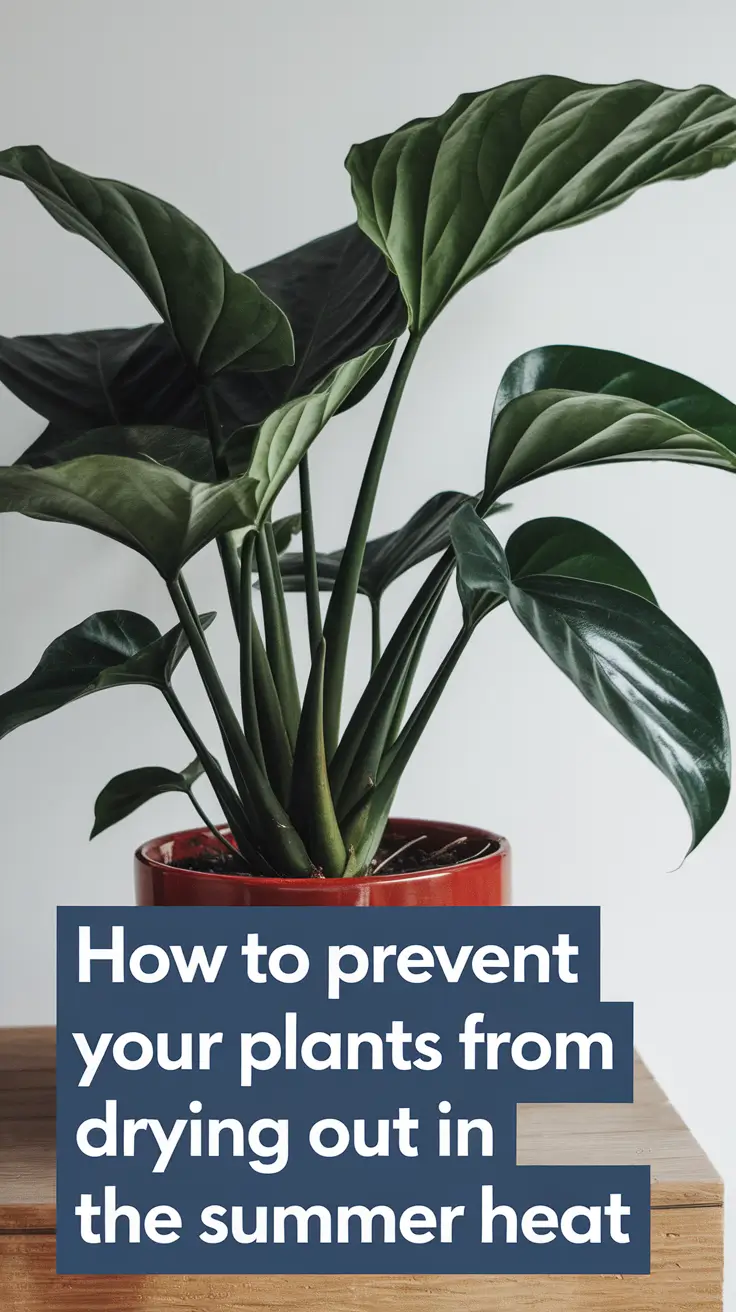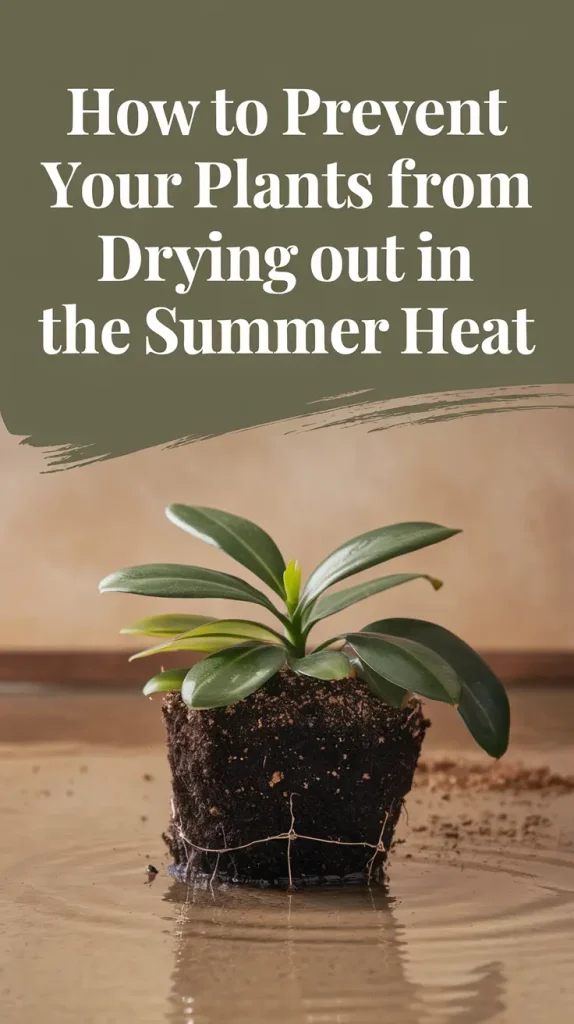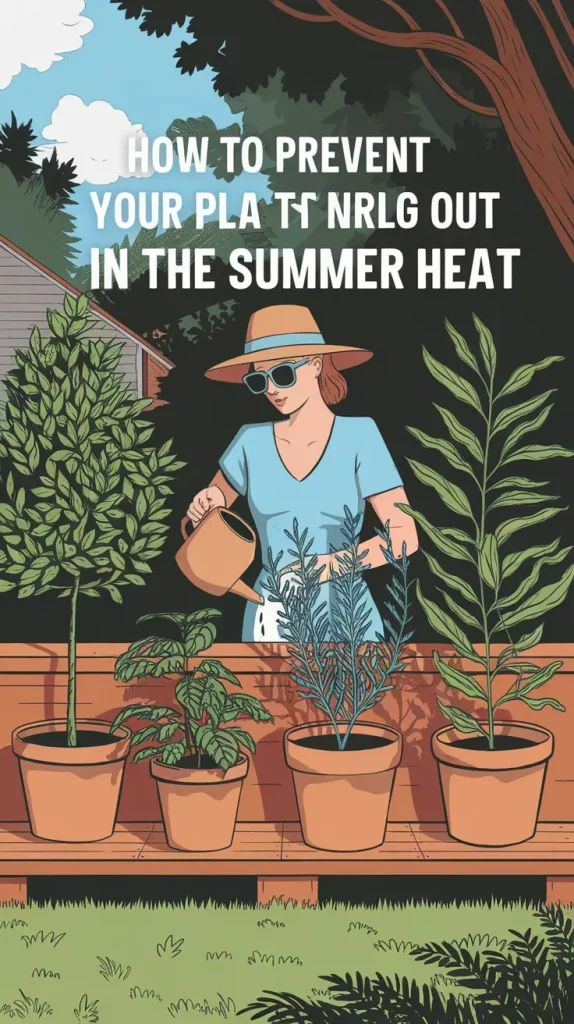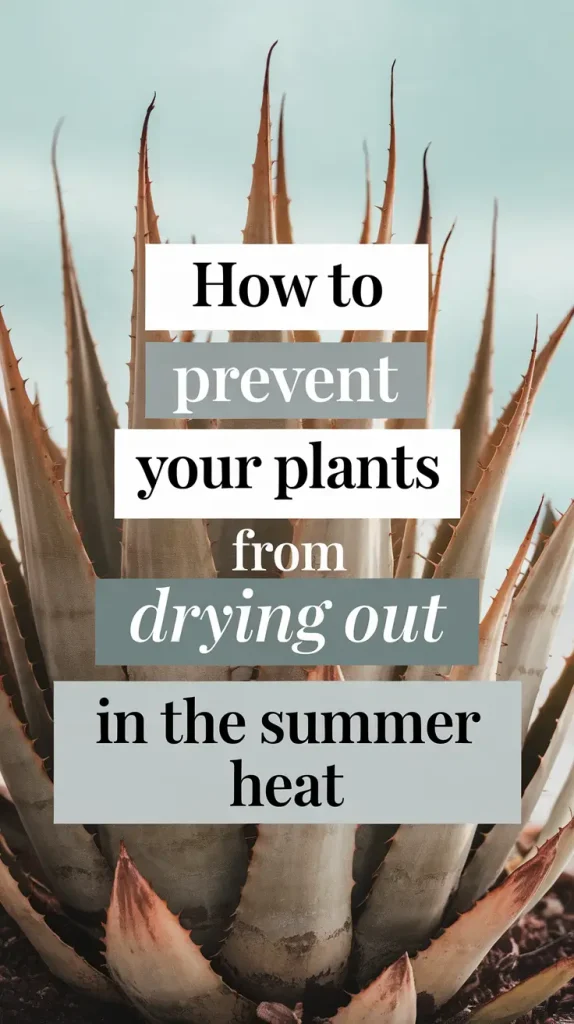How to Prevent Your Plants From Drying Out in the Summer Heat

When I returned from my weekend trip last July, I noticed my entire balcony garden was drooping as if it needed help. Crispy basil, wilted petunias, and my prized lavender—gone. I stood there, hose in hand, too late.
The thing is, I had been watering regularly. I thought I was doing everything right. Turns out, summer heat doesn’t play fair. If you’ve noticed your plants get parched overnight, I’ve had that experience too.
In this post, I’ll walk you through what actually helped me save my plants from the brutal summer heat—without turning into a full-time gardener. Smarter watering and budget-friendly shading ideas made a big difference for me. If I could make it work after the season started, you can too.

Understanding Why Plants Dry Out So Fast in Summer
Here’s the part I didn’t expect: summer heat doesn’t just dry out soil—it dries out entire systems. The air, roots and leaves of your plant can all cause problems for it.
The Hidden Stress of Summer
When the temperature rises, water evaporates not only from the soil but straight from the plant’s leaves (hello, transpiration). When your plant is exposed to hot winds or dry air, it loses water quicker than it can take it up.
I started watering early in the morning, but my leaves would still look droopy in the afternoon. The mistake? I was replacing water—but not protecting it.
The Real Problem Isn’t Watering—It’s Retention
Watering helps. But unless you’re also helping your plants hold onto that moisture, you’re just filling a leaky bucket. That’s when I learned: heat care is not just about having more water. It’s about smarter systems.
Let me show you how that worked out.
How I Changed My Watering Routine (And Why It Worked)
It started with something I thought I’d hate—changing my schedule. I’m a morning person, so watering at 7 AM was already a habit. But that wasn’t enough.
Here’s what finally worked:
3 Steps That Actually Helped My Plants Survive the Heat
- Deep Watering Every Other Day
I switched from daily light sprinkles to soaking the roots every two days. This encouraged roots to grow deeper and stay cooler. - Evening Top-Ups During Heatwaves
On especially hot days (90°F+), I added a gentle misting around 7 PM. It helped cool down the foliage and gave the roots an overnight drink. - Mulch, Mulch, Mulch
A thick layer of mulch made more difference than I imagined. Suddenly, the soil stayed moist—not muddy, just hydrated.
The Result?
Within a week, my plants stopped wilting midday. I was using less water, but getting better results. That alone made me rethink everything.
Choosing the Right Spot: Shade, Reflection, and Microclimates
This is where it all shifted. I used to think full sun meant better growth. But in summer, smart shade is the real MVP.
What I Noticed in My Own Space
Two identical basil pots. One in a corner next to a white wall. One in open sun. After three days, one was thriving, the other was fried.
Why? The wall acted like a reflector, doubling the heat exposure. The other plant, partly shaded by a taller pot nearby, kept its cool—literally.
What to Consider When Placing Plants
- How many hours of direct sun they get
- Nearby surfaces that reflect or absorb heat (walls, patios, metal)
- Wind corridors or sheltered nooks
- Can you move them midday, or rotate pots weekly?
Plants don’t need to suffer just to get light. A bit of strategic shade can go a long way.
DIY Shade Solutions That Don’t Ruin Your Aesthetic
I never thought I’d be the person hanging sheets on her balcony, but here we are. And honestly? It worked.
Low-Cost, Low-Effort Shade Ideas
- Light cotton sheets draped over poles or string
- Bamboo screens for partial coverage
- Garden umbrellas for container clusters
- Clamp-on fabric canopies (bonus: they look chic!)
I used binder clips to attach mesh fabric to my railing—suddenly, my herbs weren’t baking anymore.

Temporary vs. Permanent Shade
Some solutions are just for heatwaves. Others become part of your space. Here’s a quick breakdown:
| Shade Type | Best For | Pros | Cons |
|---|---|---|---|
| Cloth sheets | Short-term, movable pots | Cheap, quick setup | Can look messy |
| Umbrellas | Patios, decks | Stylish, adjustable | Can blow over |
| Bamboo panels | Semi-permanent beds | Natural look, reusable | Less flexible |
| Mesh netting | Raised beds or railings | Light, breathable | Not fully UV-proof |
A little fabric can feel like a luxury vacation—for your plants.
How to Lock Moisture Into the Soil (Without Overwatering)
This was the game changer for me. Once I started retaining water instead of chasing it, everything got easier.
Why Mulching Isn’t Just for Flower Beds
I thought mulch was for gardens, not pots. Wrong.
I started using:
- Coconut coir in hanging baskets
- Wood chips in larger pots
- Grass clippings around my tomatoes
- Straw for raised beds
They held moisture like magic—and gave the soil a soft, spongy texture that felt alive.
Which Material Works Best?
Here’s what I’ve learned by testing them all:
| Mulch Type | Best For | Texture | Lasts |
|---|---|---|---|
| Wood Chips | Large pots, trees | Chunky, neat | 4–6 weeks |
| Coconut Coir | Indoor/outdoor pots | Fine, clean | 2–3 weeks |
| Straw | Raised beds, veggies | Loose, light | 2–4 weeks |
| Grass Clippings | Herbs, temporary cover | Dense, fresh | 1–2 weeks |
I now keep a little stash of coir blocks that I soak once a month. It’s my secret weapon.
What to Avoid: Mistakes I Won’t Repeat This Summer
Let’s be honest—some of this I learned the hard way. But if I could go back, I’d tell myself to stop doing these five things.
Common Summer Plant Mistakes
- Watering at noon (bad timing = water loss + leaf burn)
- Over-fertilizing during a heatwave
- Using dark plastic pots in direct sun
- Leaving new plants unacclimated outside
- Neglecting wind exposure (yes, wind dries too!)
These aren’t dramatic errors, just quiet saboteurs. But fixing them gave my plants a fighting chance.
Plants That Thrived in the Heat (And Ones That Struggled)
If you’re starting from scratch or thinking of swapping a few pots, here’s what worked best for me:
What Survived and What Didn’t
Thrive Champions:
- Lavender
- Rosemary
- Snake plant
- Aloe vera
- Marigolds
Struggled More:
- Ferns
- Lettuce
- Peace lilies
- Cilantro
- Begonias
Want to go low-maintenance? Look for drought-tolerant or Mediterranean herbs—they practically ask for sunshine.
The System That Works Without Constant Supervision
This part changed my mornings. No more guilt about forgetting the watering can. No more running outside mid-meeting.
Here’s the Simple Routine I Stick to Now
- Water deeply before 8 AM, every 2–3 days
- Mulch every 2 weeks or when I see dry soil
- Shade check weekly: adjust fabric or umbrellas
- Rotate pots so all sides get equal exposure
- Quick leaf check at sunset while I unwind
It’s a rhythm now. Like brushing my teeth—but for my green friends.
Closing Thoughts
Saving your plants from summer heat isn’t about being perfect—it’s about being prepared. Just a little preparation, a few adjustments and your life becomes smoother, calmer and even more attractive.
I still lose a leaf here and there. That’s okay. But now, I don’t lose whole pots. And I no longer dread July.
💡 Pin this if you’re mapping out your summer plant care too.
🌿 And tell me—what’s one change that made the biggest difference for your garden?

